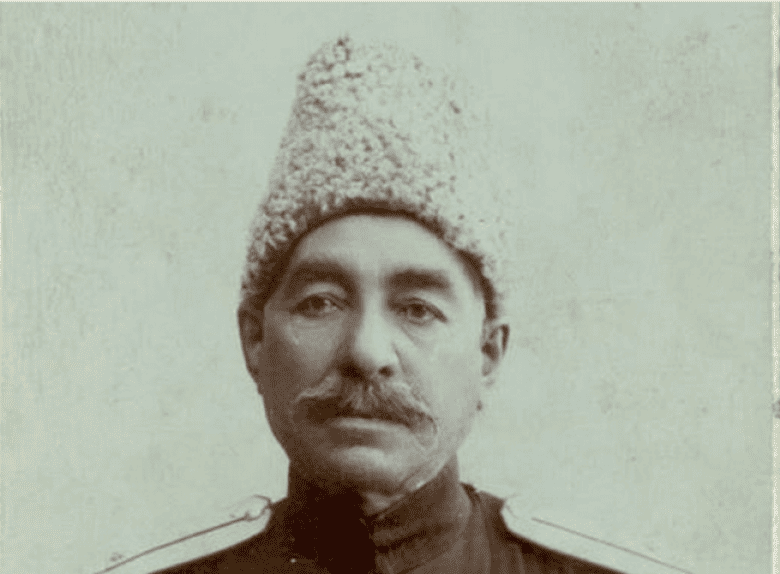Birth of Samson Ter-Poghosian (Raffi’s “Fool”)(May 10, 1851)

The eponymous hero of “The Fool” (Khentuh) shows up with the name of Vartan at the end of Chapter 1 of the celebrated novel of Raffi (Hakob Melik-Hakobian, 1835-1888). In a footnote, the author wrote: “The young man’s actual name was Samson, but the hero of my novel is one of a different type. May I be forgiven for digressing from strict historical fact in the exercise of poetic license” (translated by Donald Abcarian).
Samson Ter-Poghosian was born on May 10, 1851, in the village of Aragiugh, currently in the province of Kotayk (Republic of Armenia). He received his elementary education from his father, Ter Poghos, who was a priest. Later, he studied at the parish school of Vagharshapat and graduated from the Kevorkian Seminary of Holy Etchmiadzin. He was well-versed in Armenian, Russian, Kurdish, and Turkish.
He married Anna Ter–Tadevosian in 1870 and had four children, of which Arsen Ter-Poghosian (1875-1938) was one of the organizers of the battle of Bash-Aparan in 1918 and Vasak Ter-Poghosian (1881-1936) was Commissar (Minister) of Finances of Soviet Armenia between 1922 and 1928. He also had three children from his second marriage.
Samson Ter-Poghosian participated as a volunteer in the Yerevan battalion led by General Arshak Ter-Ghukasov during the Russo-Turkish war of 1877-1878. In June 1877, when the Turkish troops put the fortress of Bayazet under siege, Ter-Poghosian, disguised as a Kurd and pretending to be crazy, was able to cross the enemy lines and report to Ter-Ghukasov on the situation. The auxiliary forces broke the siege on June 28 and saved the fortress’ garrison. Through Ter-Ghukasov’s intercession, the Russian military authorities bestowed the rank of officer upon Ter Poghosian, decorated him with the golden cross of St. George, and designated a life pension for him.
He continued his service in the Russian army after the war in intelligence missions and translation duties, and later he dealt with issues of rearguard service. He reached the rank of colonel. He served in Tiflis and St. Petersburg, and after being discharged, he returned to Armenia.
In the 1880s and 1890s, Ter Poghosian and his cavalry group fought against the Kurdish marauders who attacked the Armenian village in the plain of Ararat and surrounding areas. He agreed to participate in an armed expedition to Western Armenia, organized by the Armenian Revolutionary Federation, in 1896. However, the planned action was not carried out that year. Ter Poghosian refused to participate in the expedition of 1897, which went down into history as the Khanasor expedition.
Between 1903 and 1906 he was assistant and acting head of the district of Vayots Dzor, and from 1906–1911 he was director of the water distribution service of the district of Etchmiadzin. In 1890 he financed the foundation of an elementary school in his birthplace Aragiugh and continued paying the faculty salaries until his death.
Samson Ter–Poghosian passed away on April 23, 1911, in Vagharshapat. A huge crowd participated in the funeral. He was buried near the left wall of the church of St. Gayane. A bust of Ter-Poghosian was inaugurated in 1974 at the entrance of the cemetery of Aragiugh.
